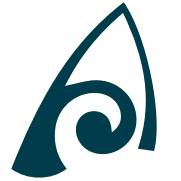AccesSurf began the journey to adaptive water sports through Adaptive Surfing. There are a variety of ways to support an individual in surfing “their way.” Much of the adaptation may include creating a social support system around the activity as well as creating environmental accessibility and adaptive equipment to maximize a person’s ability to paddle, surf waves, and enter/exit the ocean.
Adaptive surfing is done in a variety of positions. Below are a few ways to engage in adaptive surfing, but generally people are very ingenuous and find their own way to surf using many different adaptive techniques.
Some of the essential functions of adaptive surfing include: back extension, neck extension, prone push-up, upper extremity strength, core strength, lower extremity strength, active range of motion in all joints, coordination, standing balance, postural stability, paddling, strength, endurance, grip, speed, and more.
Adaptive Surfing – Prone Assist
Surfers ride waves in any position and require assistance to paddle into waves, exit waves, and recover from a wipeout. Surfers will not be permitted to paddle during competition.
Adaptive Surfing – Prone
Surfers ride waves in a prone position and can paddle into a wave and recover independently.
Adaptive Surfing – Sit
Surfers ride waves in a seated position, catching and recovering independently.
Adaptive Surfing – Wave-ski
Surfers ride waves in a seated position and use a paddle to catch and maneuver independently on waves. Surfers recover from a wipeout independently.
Adaptive Surfing – Kneel
Surfers who ride waves in a tripod, kneeling, or high-kneeling position and are independent in catching and recovering from waves.
Adaptive Surfing – Stand
Surfers ride waves in a standing position with or without orthotics and/or prostheses. Surfers must be independent in catching waves and recovering after waves.
Adaptive Surfing – Sight Impaired
Surfers have blindness or low vision. Glare, visual acuity, and motor processing is essential in surfing in this category. Surfers usually have a companion that calls out waves or dangers so a surfer can feel and adjust their ride on a wave.
Many of the AccesSurf volunteers have an opportunity to coach our community to surf more independently at our programs. We have divided skills into pre-surf, during surf, and post-surf skills that individuals can coach to support a person toward independence in surfing. Please refer to the Clinics portion of this manual to learn about pre-, during and post-surf coaching skills.

